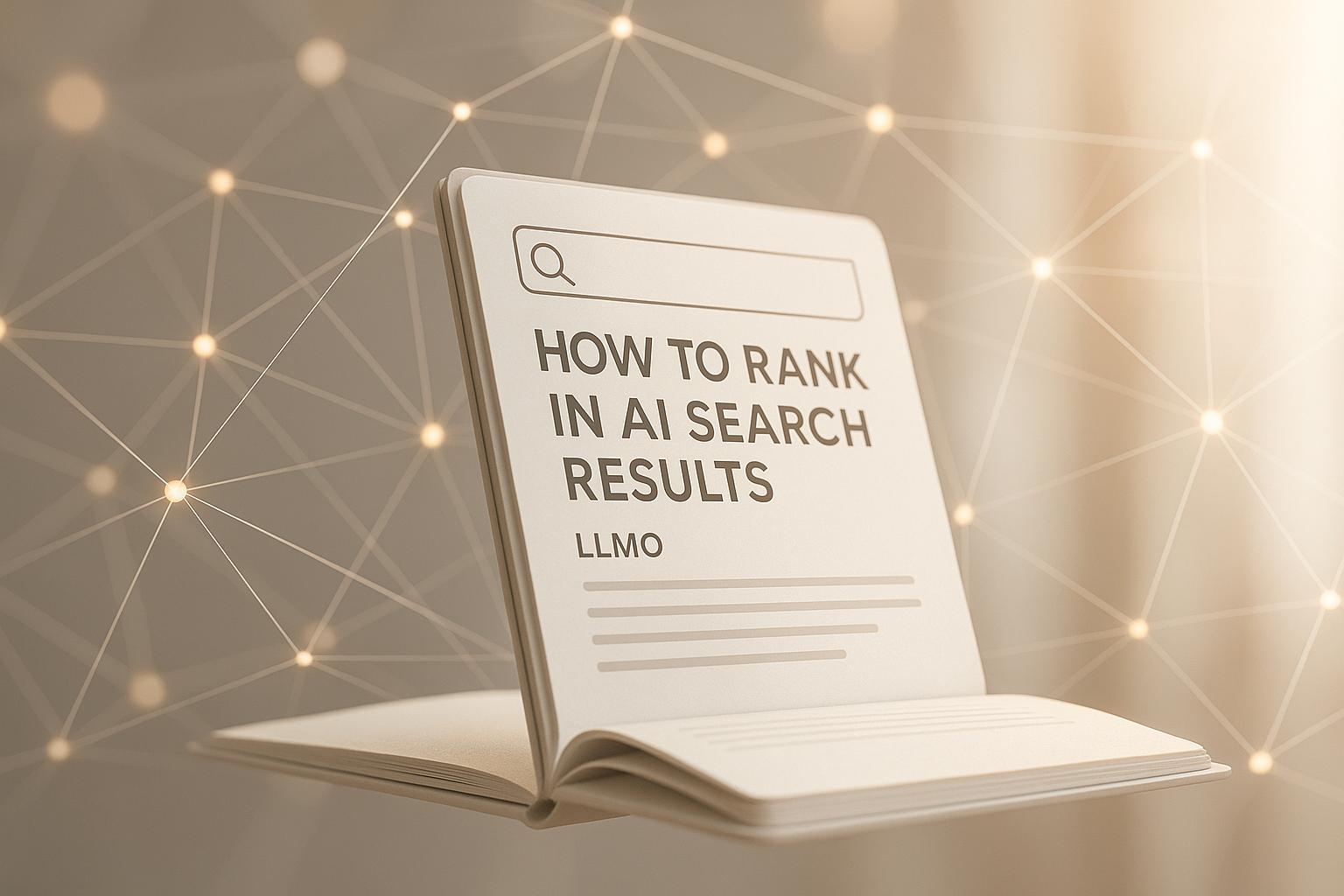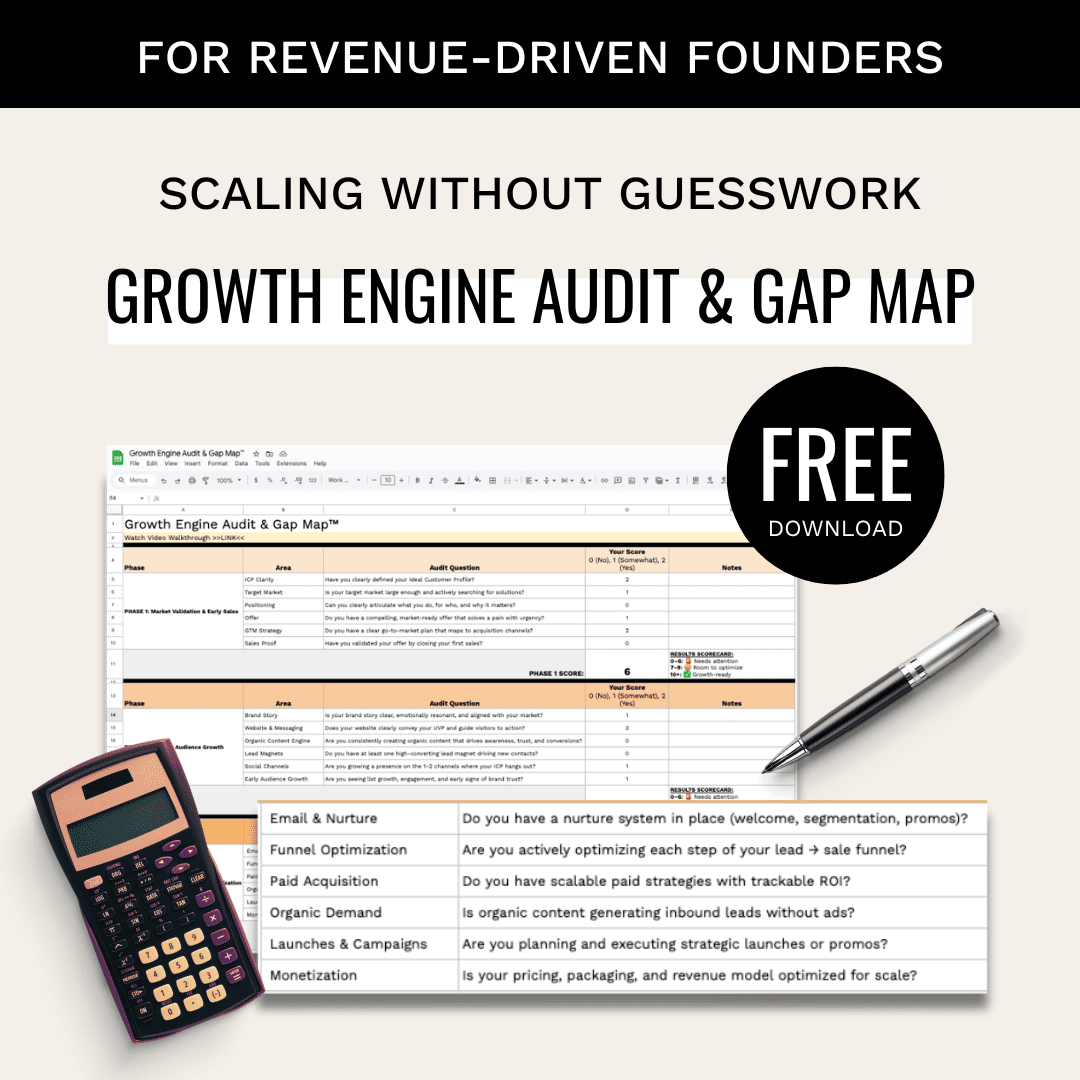AI search engines have changed the game. Unlike older search tools that relied on keywords and backlinks, AI systems focus on context, intent, and meaning. If you want to know how to rank in AI search results so that your content gets shown even in large language model optimization (LLMO) queries, this article was written just for you. Here are the basics for how to rank in AI search results within LLMs:
- AI prioritizes expertise and clarity. Content must offer detailed, actionable insights that address user questions directly.
- E-E-A-T is critical. AI evaluates your content’s Experience, Expertise, Authoritativeness, and Trustworthiness. Real-world examples, technical accuracy, and transparency are key.
- Structure matters. AI breaks content into smaller chunks. Use clear headings, bullet points, and schema markup to make your material easy to process.
- Natural language wins. Write conversationally, answering questions as users would ask them. Avoid keyword stuffing – AI understands related terms and concepts.
- Authority takes effort. Share original research, case studies, and expert insights to stand out.
The hard part? AI search systems don’t just show a list of links – they deliver concise answers. If your content isn’t optimized for these systems, you risk being invisible to decision-makers actively searching for LLMO solutions. But by focusing on expertise, clarity, and user intent, you can position your content to rank and resonate.
How to rank in AI search results → The AIO/AEO/GEO/LLMO Masterclass for AI SEO Experts
How AI Search Engines Work
To effectively optimize content for LLMO, it’s essential to grasp how AI search engines function. Unlike traditional search engines that rely on keyword matching and backlink metrics, AI search systems delve deeper. They use natural language processing and machine learning to interpret the meaning behind queries and assess content quality in a sophisticated way.
When someone searches for LLMO solutions, AI engines process multiple layers of information at once. They analyze the query’s context, evaluate the semantic relationships between words, and determine how well potential results align with the user’s intent. These systems rely on intricate computations that factor in hundreds of ranking elements.
The standout difference with AI search lies in its ability to decode complex queries. For instance, a traditional search engine might falter with a question like "best practices for reducing hallucinations in enterprise language models." AI-powered systems, however, understand this as a request for methods to improve accuracy and reliability in LLMO.
Another key distinction is how AI systems prioritize content relevance and timeliness. They can identify evergreen content – valuable over time – versus information that quickly becomes outdated. For example, technical guides on core LLMO optimization principles may maintain high rankings for extended periods, while content tied to specific model versions or tools needs frequent updates to stay relevant. These differences highlight the need for a clear understanding of user intent and content authority.
User Intent and Context in AI Search
AI search engines excel at interpreting natural language queries and their surrounding context. People searching for LLMO solutions often frame their queries as conversational questions rather than isolated keywords, pushing content creators to move beyond traditional SEO strategies.
Understanding search intent categories is essential. These categories include informational (seeking knowledge), navigational (finding specific resources), commercial (comparing solutions), and transactional (ready to purchase). For LLMO content, most queries fall under informational and commercial intent, where users aim to learn optimization techniques or compare approaches.
AI systems also factor in context from previous searches and user behavior. For instance, if someone has been exploring challenges in enterprise AI implementation, subsequent searches on model optimization will likely be interpreted within that business framework rather than for academic or personal use.
Another critical aspect is semantic understanding. AI engines recognize that terms like "language model fine-tuning", "LLM optimization", and "neural network performance enhancement" often point to similar concepts. This means your content doesn’t need to include every keyword variation, as the system understands these relationships. Instead, focus on providing clear, concise answers supported by practical examples and details.
E-E-A-T Principles: Experience, Expertise, Authoritativeness, and Trustworthiness
When you’re first learning how to rank in AI search results, one core principle to apply at all times is E-E-A-T. It’s a major factor in AI search rankings. These principles – Experience, Expertise, Authoritativeness, and Trustworthiness – help AI systems decide how prominently your content appears in search results.
Experience reflects hands-on knowledge. AI systems can differentiate between content created by practitioners who’ve applied LLMO techniques and those who’ve only researched them. Including real-world implementation details, challenges faced, and lessons learned can greatly enhance your content’s performance.
Expertise involves demonstrating deep technical knowledge. AI engines cross-check your content against established knowledge bases and authoritative sources. For LLMO topics, this means explaining complex ideas clearly while ensuring technical precision.
Authoritativeness relates to your reputation in the LLMO field. AI systems assess factors like author credentials, publication history, citations from other experts, and mentions in reputable industry sources. Building authority requires consistent publication of high-quality content and active engagement with the broader AI community.
Trustworthiness depends on transparency and reliability. AI systems scrutinize content for factual accuracy, outdated information, and misleading claims. They also look for clear contact information, secure websites, and disclosures of business relationships or potential conflicts of interest.
To strengthen E-E-A-T in your LLMO content, include author bylines with relevant credentials, cite authoritative sources, share real-world examples, and keep your content updated. Acknowledging limitations or uncertainties in complex topics also boosts credibility. For example, detailed case studies of successful LLMO implementations not only showcase experience but also enhance expertise and authority. Similarly, transparent discussions of methodologies and results build trust while reinforcing your technical knowledge.
The interplay between these principles means that improving one often strengthens the others. By focusing on real-world examples, technical accuracy, and transparency, your content can achieve higher visibility and credibility in AI-driven search systems.
Content Optimization Strategies for AI Search Results
Optimizing content for AI search requires a fresh perspective on writing and structuring. The strategies outlined below are designed to align with how AI systems process and deliver information.
Writing Content for Natural Language Queries
AI systems are built to interpret conversational queries, so your content should mirror the way people naturally ask questions. Instead of focusing on rigid keyword phrases like "LLMO optimization techniques", address real-world questions such as "How can I make my language model more reliable?"
One important concept is section-level optimization. AI search engines don’t evaluate entire web pages; they break content into smaller, standalone pieces or "chunks" to assemble answers [1][2]. This means every section of your content should make sense on its own and provide value, even when removed from its original context.
To achieve this, structure your content around common questions and challenges. Begin paragraphs with clear, concise topic sentences that could double as direct answers. Use a conversational tone that reflects how technical professionals think and search. For instance, instead of formal terms, they might type queries like "Why does my model keep generating inconsistent results?" Tailor your headings and content to these natural patterns, providing straightforward, actionable solutions.
Additionally, focus on the semantic connections between related concepts. For example, terms such as "fine-tuning", "parameter adjustment", and "output consistency" are often linked in technical discussions. AI systems recognize these relationships, so you can write naturally without overloading your text with repetitive keywords. Instead, aim for a thorough exploration of interconnected ideas within each section.
Using Structured Data and Clear Formatting
When it comes to how to rank in AI search results, clear formatting plays a key role in helping AI systems understand and extract relevant information from your content. Organized headings, bullet points, and a logical hierarchy make it easier for AI engines to pinpoint the most relevant sections for specific queries.
Craft descriptive headings that act as both anchors and potential search queries. For example, instead of generic titles like "Tips for Implementation", use specific ones like "How to Reduce Memory Usage During LLMO Training" or "Fixing Tokenization Errors in Enterprise Models."
Schema markup is another tool that adds context to your content. For example, Article schema works well for guides, FAQ schema is ideal for question-and-answer sections, and HowTo schema is perfect for step-by-step instructions. This additional layer of structure helps AI systems categorize and present your content more effectively in search results.
To make your content more digestible, use visual elements strategically. Highlight key points with bold text, emphasize ideas with italics, and use bullet points sparingly to maintain a natural narrative flow. When including technical examples or code snippets, clearly label and explain them to provide practical context.
Finally, ensure your content flows logically, with each paragraph building on the last while still being independently valuable. Since AI systems often pull individual sections to answer queries, each "chunk" of text should include enough context to stand on its own.
Building Authority Through Original Research and Expert Input
Establishing authority is essential for ranking well in AI-driven search results. Content that demonstrates expertise and offers unique insights is highly valued by these systems. For LLMO topics, this means going beyond surface-level information to deliver real value through original research, testing, and expert contributions.
Share detailed findings from your experiments, including model configurations, performance metrics, and lessons learned. Incorporating expert interviews or quotes adds credibility and depth to your content. These elements highlight your hands-on experience and reinforce your authority in the field.
Citing reputable sources and recent studies further strengthens your content. AI systems cross-check information across multiple references, so linking to peer-reviewed research, official documentation, or respected industry publications bolsters your claims. Be sure to explain how these references apply to practical LLMO scenarios to make the information actionable.
Proprietary data and case studies are another way to stand out when you’re first getting started learning how to rank in AI search results. Sharing anonymized results from your own projects or client work not only differentiates your content but also provides real-world examples that readers can relate to. Regularly updating your content with new findings and corrections shows a commitment to accuracy and keeps your material relevant in a fast-changing field.
Instead of trying to cover every LLMO topic, focus on delivering in-depth insights into specific areas where you excel. AI systems tend to reward content that thoroughly addresses user needs over content that only scratches the surface. By prioritizing depth and practical value, you’ll create content that resonates with both AI systems and human readers.
sbb-itb-e8c8399
Tools and Platforms for AI Search Optimization
With respect to how to rank in AI search results, there’s no way to get it done without the right tools, so it’s essential to use tools that enhance the clarity, organization, and depth of your content. As search algorithms grow more sophisticated, so do the platforms designed to optimize content for natural language queries and technical precision. Below, we’ll dive into tools that can sharpen your content for large language model optimization (LLMO).
AI-Powered Content Analysis Tools
Today’s AI-driven content analysis tools do much more than track keyword density. They evaluate factors like semantic relevance, content structure, and readability, ensuring your material is well-suited for natural language queries. These tools excel at identifying content gaps and recommending changes to make your work more aligned with the expectations of AI-based search systems. By prioritizing clear organization and technical accuracy, they help you refine your content for better LLMO results.
SEO Platforms with AI Features
SEO platforms are increasingly incorporating AI capabilities to merge traditional optimization techniques with natural language insights. Many of these platforms now offer features like conversational query analysis, semantic clustering, and advanced topic research. By combining these with conventional SEO metrics, you can gain a comprehensive view of your content’s performance. This dual approach ensures your strategy meets the needs of both traditional search engines and cutting-edge AI systems.
Marketing Strategies for AI-Driven B2B Buyer Journeys
As AI search continues to reshape how B2B buyers find and assess solutions, marketers must rethink their approach by learning how to rank in AI search results. Unlike traditional keyword-based systems, AI interprets context and intent, pushing businesses to adapt their strategies. Today’s B2B buyer journey revolves around conversational queries and demands quick, relevant answers at every stage of the decision-making process.
Grasping the new buyer behavior is crucial in this AI-driven landscape. Buyers now use natural language queries like, “What’s the best way to optimize our data pipeline for real-time analytics?” instead of simply typing “data pipeline optimization tools.” This evolution calls for content that goes beyond basic keyword strategies, delivering in-depth, actionable insights that align with buyer needs.
Building Trust in AI-Driven Search Systems
To thrive in this environment, trust is non-negotiable. Consistency across all touchpoints is key to establishing credibility with both AI algorithms and human decision-makers. Your expertise and accuracy must shine through on every platform.
Showcasing real-world expertise through case studies and detailed guides strengthens your content’s authority. When you include specific outcomes, methodologies, and lessons learned, AI systems identify your content as valuable and reliable. This approach is especially effective for complex B2B topics where buyers need to understand not only what a solution offers but also how it performs in real scenarios.
Transparency about methodologies and limitations further enhances content reliability. Clearly outlining how conclusions were reached and any constraints helps AI systems evaluate your content’s trustworthiness. This transparency also resonates with decision-makers looking for dependable information.
Frequent updates and corrections show a commitment to accuracy. AI systems monitor how often content is refreshed and whether updates improve its quality. Keeping content current and accurate signals to AI that your organization stays aligned with industry changes and prioritizes reliability.
Aligning Content with Buyer Personas and Intent
Tailor your content to different buyer personas and their intent at various stages – whether they’re in the awareness, consideration, or decision-making phase. This strategy complements earlier content optimization efforts by focusing on mapping the buyer journey rather than just structuring content.
For technical decision-makers, focus on implementation details, performance benchmarks, and integration requirements. Business stakeholders, on the other hand, care more about outcomes, ROI, and strategic benefits. Addressing these distinct priorities ensures your content resonates with the right audience and helps AI systems pair it with relevant queries.
Strategic cross-linking within your content can also boost visibility. Linking high-level overviews to detailed guides demonstrates a logical flow of information, helping AI recognize how pieces of content connect. This approach enables AI to recommend your material effectively throughout the buyer journey.
One key point regarding how to rank in AI search results: Success comes from supporting the entire buyer journey, not just isolated search queries. Buyers seek integrated insights that cover technical details, business outcomes, and implementation strategies. A well-rounded content strategy – offering depth and breadth – ensures your organization meets both buyer expectations and AI search criteria.
Conclusion: Key Steps for Better AI Search Rankings
AI-driven search has transformed how B2B content optimization works, pushing businesses to move beyond outdated keyword-focused tactics. This shift emphasizes the need to establish genuine expertise and trustworthiness in an increasingly AI-centric environment.
To succeed with Large Language Model Optimization (LLMO), creating content that showcases real expertise, experience, and authority is non-negotiable. AI algorithms favor content backed by original research, in-depth case studies, and credible expert opinions. This isn’t just about writing more – it’s about creating content that resonates with both human readers and AI systems.
Equally important is having a structured content framework. Using schema markup and organizing information in a clear hierarchy makes it easier for AI to understand, extract, and even cite your material. This structured approach strengthens your position as an authoritative source.
Building on earlier strategies for natural language optimization, it’s essential to focus on the full context of user queries. B2B buyers today aren’t just searching for keywords – they’re asking multi-layered questions that demand detailed, thoughtful answers. Meeting this need requires aligning your content strategy with broader marketing efforts to ensure consistency and depth.
Tracking performance in this new landscape calls for specialized tools. Traditional SEO metrics alone won’t cut it when evaluating AI search results. Instead, tools designed for Generative Engine Optimization (GEO) can help you measure factors like citation frequency, sentiment, and share of voice in AI-generated outputs. These insights allow for more precise adjustments to your strategy.
The potential rewards for adapting quickly are immense. AI-driven traffic converts at a rate 4.4 times higher than traditional search traffic[1], thanks to its ability to connect users with highly relevant content. This creates a unique opportunity for businesses that invest in creating reliable, comprehensive content tailored for AI systems.
Now that you’ve learned the basics on how to rank in AI search results, focus on these core strategies: audit your content for E-E-A-T principles, implement structured data markup, aim to answer complex user questions comprehensively, and rely on AI-specific performance tracking tools. By mastering these essentials, your business can build a competitive edge as AI continues to reshape how B2B buyers search and make decisions.
FAQs
How can I make sure my content meets E-E-A-T standards for AI search engines?
To make sure your content meets the E-E-A-T standards (Experience, Expertise, Authoritativeness, Trustworthiness) valued by AI search engines, focus on these key elements:
- Experience: Share real-world insights or first-hand knowledge to show your deep understanding of the subject.
- Expertise: Provide accurate, well-researched information that reflects your mastery of the topic.
- Authoritativeness: Strengthen your credibility by earning mentions, citations, or backlinks from trusted and reputable sources.
- Trustworthiness: Keep your content transparent and reliable while upholding the integrity of both your website and authors.
Focusing on these factors will boost your chances of being featured in AI-driven search results and summaries.
I need to know to rank in AI search results – What are the best tools to optimize my content for AI-driven search systems like LLMO?
To stay ahead in the evolving world of AI-driven search systems, particularly those powered by large language models (LLMs), using the right tools is essential. Here are a few standout options that can enhance your content strategy:
- Surfer: This platform uses AI to optimize your content for both traditional search engines and LLM-based systems, ensuring it aligns with the latest search trends.
- Ahrefs Brand Radar: A tool designed to monitor your brand’s visibility within AI-driven search results by analyzing vast datasets from millions of prompts.
- AthenaHQ: Offers detailed insights into how AI systems present your brand across various responses, helping you fine-tune your content for better engagement.
These tools equip you with valuable data and strategies to maintain your relevance and visibility in the dynamic AI search landscape.
How do AI search engines evaluate content relevance and freshness, and how can I ensure my content stays current?
AI search engines determine the relevance and freshness of content by examining factors like credibility, recency, and trustworthiness, often using the E-E-A-T framework (Experience, Expertise, Authoritativeness, and Trustworthiness). They also give preference to content that is clearly structured, easy to follow, and directly addresses user intent.
To keep your content relevant, make it a habit to update it with new insights, accurate data, and timely information. Aim for content that dives deep into topics without overwhelming the reader, using a well-organized structure and dependable sources. Since AI systems value content that’s easy for both humans and algorithms to process, focus on writing that’s concise, engaging, and formatted for clarity.
Related Blog Posts
- AI Visibility: 5 Steps to Optimize for AI Search Ranking in 2026
- Reddit AI Search: How to Get Your Content Picked Up by AI Answer Engines
- AI Brand Visibility: How To Optimize Your Brand’s Visibility in AI Search
- How To Rank in AI Search Results for GEO & AEO




